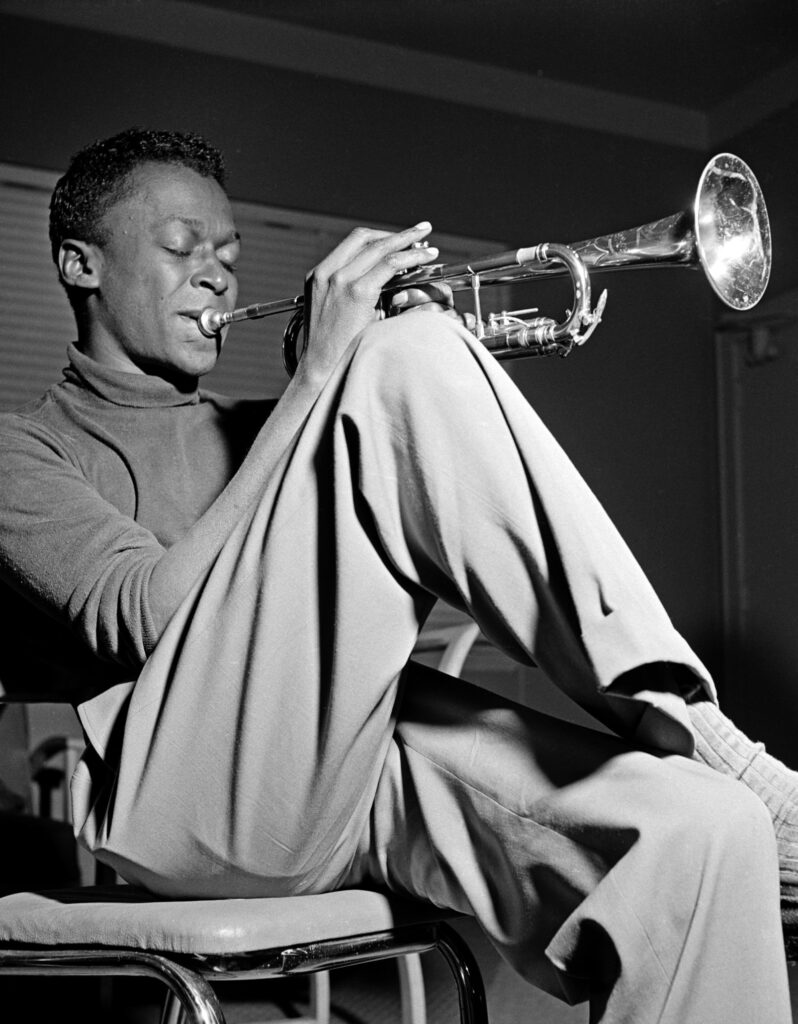In the vibrant tapestry of jazz history, few names loom as large as Miles Davis. A musical pioneer, composer, and trumpet virtuoso, Davis broke new ground and reshaped the very essence of jazz. With his unmistakable sound, innovative compositions, and fearless approach to music, he left an indelible mark on the world of jazz and beyond. Join us as we delve into the remarkable life and artistic legacy of the one and only Miles Davis.
Early Life and Musical Genesis:
Miles Dewey Davis III was born on May 26, 1926, in Alton, Illinois, to a middle-class African-American family. From a young age, Davis demonstrated an innate talent and deep passion for music. Introduced to the trumpet by his father, he quickly honed his skills, drawing inspiration from jazz luminaries such as Louis Armstrong and Roy Eldridge.
His formal musical education began at the prestigious Juilliard School in New York City. However, it was the vibrant local jazz scene in the city that truly captured his imagination. Immersing himself in the bebop revolution led by Charlie Parker and Dizzy Gillespie, Davis embarked on a transformative journey that would shape his musical direction.
Birth of Cool and the Birth of a Legend:
Davis’ landmark album, “Birth of the Cool” (1957), marked a defining moment in his career and the evolution of jazz itself. This innovative project pioneered the “cool jazz” movement, characterized by relaxed tempos, intricate arrangements, and a departure from the fiery intensity of bebop. Davis assembled a talented ensemble, featuring iconic musicians like Gil Evans and Gerry Mulligan, to create a sound that captivated audiences and forever changed the course of jazz history.
Kind of Blue and Jazz’s Magnum Opus: If “Birth of the Cool” was a game-changer, then “Kind of Blue” (1959) was an outright revolution. Regarded as the greatest jazz album of all time, it embodies the essence of Davis’ genius. With modal jazz as its foundation, the album showcased his minimalist approach, allowing space for improvisation and emphasizing mood and atmosphere. The result was a mesmerizing and introspective sonic landscape that continues to captivate listeners to this day.
Further Explorations and the Fusion Revolution:
Never one to rest on his laurels, Miles Davis constantly sought new avenues for artistic expression. In the 1960s and ’70s, he embarked on a period of groundbreaking experimentation, fusing jazz with elements of rock, funk, and electronic music. Albums like “Bitches Brew” (1970) and “In a Silent Way” (1969) heralded the birth of jazz fusion, cementing Davis’ status as a fearless innovator who pushed the boundaries of genre conventions.
Legacy and Impact:
Beyond his musical contributions, Miles Davis was a cultural icon whose influence transcended the boundaries of jazz. His fashion choices, from sharp suits to flamboyant stage attire, were as distinctive as his musical style. Davis’ commitment to authenticity and creative exploration inspired generations of musicians, shaping the course of jazz, rock, and beyond.
Conclusion:
Miles Davis’ biography is a testament to the transformative power of artistic vision and unwavering dedication. From his early days in the jazz clubs of New York City to his trailblazing fusion experiments, Davis fearlessly carved his own path, forever altering the musical landscape. His innovative spirit, unparalleled talent, and groundbreaking compositions continue to inspire musicians and captivate listeners around the world. As we celebrate his life and musical legacy, let us remember Miles Davis, the revolutionary maestro who forever changed the face of jazz.


No responses yet